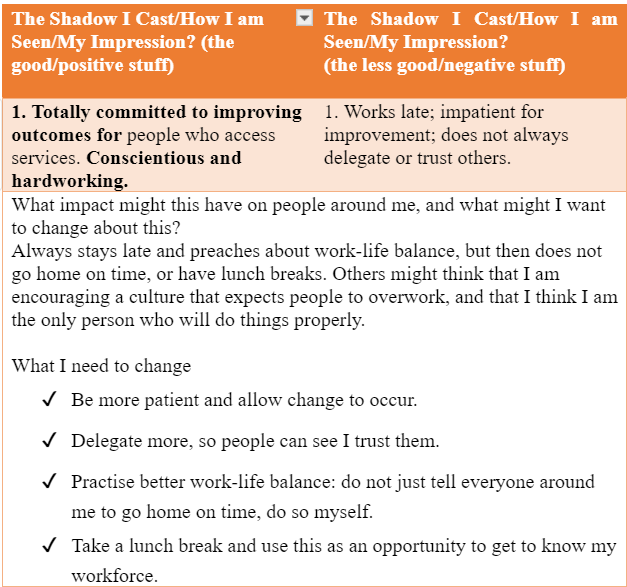Paying attention to your shadow side
In The Leadership Shadow, de Haan and Kasozi (2014) observe that 21st-century leaders are often expected to be single-minded in their pursuit of improvement and driving a vision. This may encourage some leaders to be always open to new ideas, but a narrow focus can also lead to stubbornness, inflexibility and an inability to communicate effectively.
We may read that description and think: ‘That doesn’t describe me, but it does describe someone I worked with in the past.’ The reality is that most of us will go to considerable effort to protect our self-image from anything unflattering or that puts us in a bad light. We are often reluctant to acknowledge aspects of ourselves we are not proud of or that we have thoughts we do not want others to know about and feelings we try to hide.
Leaders of social and care organisations aim to give their very best. They want to use their strengths and skills in a positive way and to ensure people accessing services feel respected and cared for. Nonetheless, we all have a ‘shadow side’: a darker aspect of our personality that we do not want to admit to.
This shadow side primarily consists of instinctual and negative emotions (like selfishness, greed and envy) but also contains anything about us that we deny or disown because we think it unacceptable, inferior or unpleasant. Unfortunately, this means we often repress, or cut ourselves off entirely from, many of our good qualities and they become part of the shadow self.
Discovering our shadow self can be challenging, but it can also lead to greater authenticity, energy and creativity. Try the simple exercise below to discover your shadow self.
Discover your shadow side
Write down the leadership strengths that you hope your colleagues see you as having (i.e. the good and positive stuff). Then consider how others could perceive those same characteristics less favourably (the less good and negative stuff) – in other words, your shadow (how you might be seen by others).

Here is a completed example:

More information on discovering and managing your shadow side can be found here
If we remain unaware of our shadow side, it will not only impact on ourselves but those around us. So, we need to be able to reflect on why we behave as we do and how other people may perceive our actions.
A helpful technique is to consider the last time you became defensive: what led to this? Was it your attempt to keep your shadow side at bay? de Haan and Kasozi (2014) provide guidance on different personal leadership profiles and the shadow side that can derail them. They also offer the following advice to avoid your shadow side being what other people see most of the time.
- Be open to upwards feedback, however painful this may be.
- Be open to feedback from your own shadow side, although this will sometimes be painful.
- Nurture positive, honest relationships.
- Do not just lead in the abstract or indirectly, but in the here and now.
- Engage in active and honest (self-) reflection.
 Learning Organisation
Learning Organisation